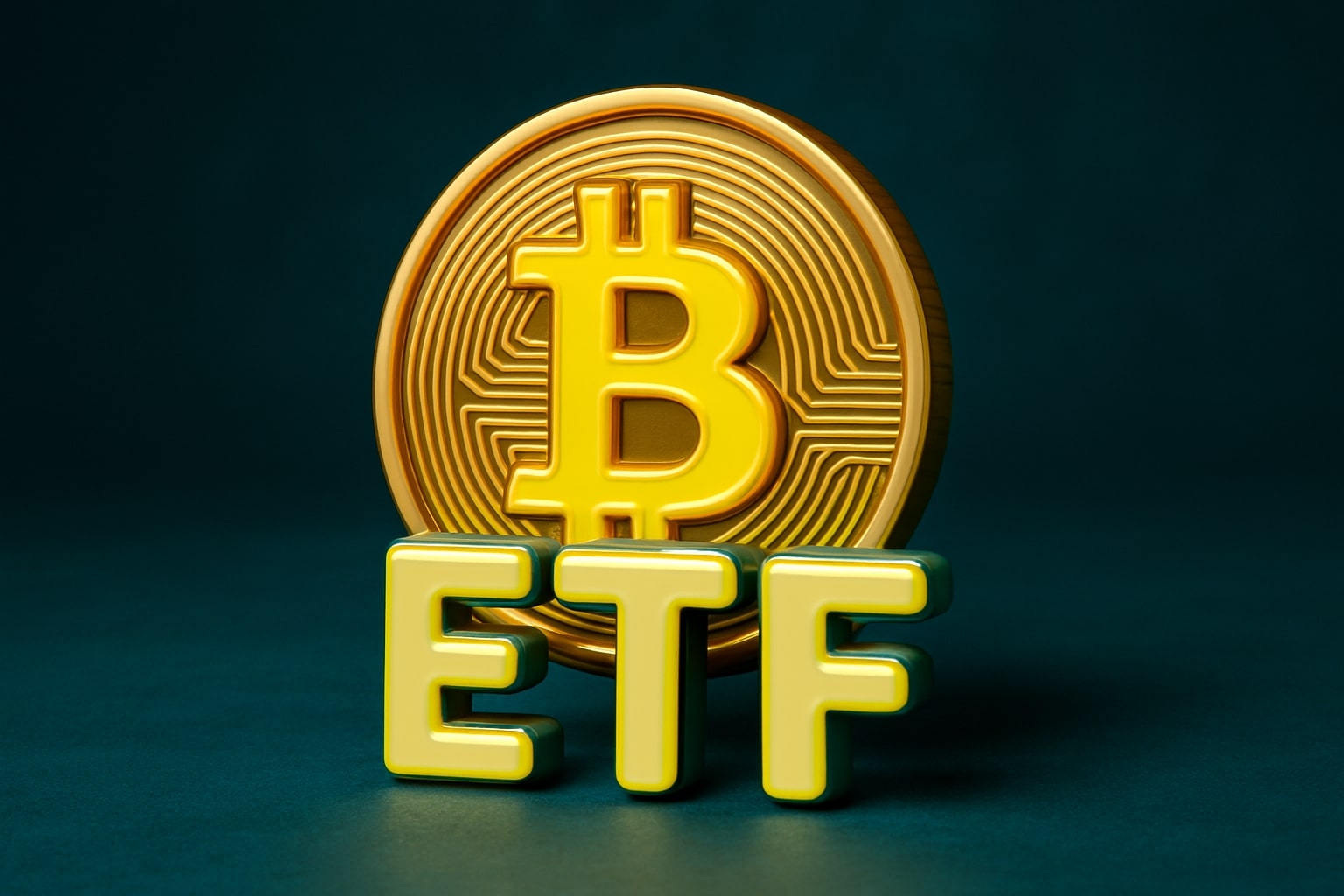
IBIT Dominates Bitcoin ETF Flows as BTC-USD Battles $100K Amid $524M Inflow and $278M Outflow Shock
Spot ETFs swing violently ahead of inflation data, with IBIT capturing the bulk of creations while BTC trades between $100K and $105K as long-bond supply fears return | That's TradingNEWS
BTC-USD ETF Flows Signal a Market on Edge as Capital Swings Between Fear and Opportunity
Institutional Positioning Around BTC-USD Turns Violent as $524M Inflow Flips to $278M Outflow
The Bitcoin ETF complex delivered one of its most dramatic two-day stretches of 2025, exposing how aggressively institutional traders are recalibrating ahead of inflation data, long-bond supply, and rate expectations. Spot Bitcoin ETFs posted $524 million of inflows on Nov. 11, the strongest single-day commitment in over two weeks—only to reverse into $278 million of outflows on Nov. 12. This split-second whiplash shows precisely where the stress points sit: demand for long-duration Treasuries, uncertainty around today’s CPI print, and the heavy refinancing calendar that threatens to push real yields higher. Traders watched BTC-USD slip toward $100,000 even as Tuesday’s inflows helped absorb early selling, with liquidity firming and NAV spreads tightening. But when ETF desks hesitated ahead of the 30-year auction, Bitcoin lost the cushion that had held the market above $103,000 earlier in the week.
Long-Bond Auctions and Treasury Supply Dictate ETF Creations as Yield Sensitivity Intensifies
The pattern across the ETF flows aligns cleanly with pressure in the long end of the U.S. Treasury curve. When officials signaled that supply adjustments would be gradual rather than aggressive, long yields eased, and risk assets—including BTC-USD—caught immediate relief. That environment drove Tuesday’s $524M creation wave, with institutional allocators rediscovering appetite for Bitcoin exposure. But the very next day, the looming 30-year auction became the market’s focal point, with traders deeply aware that any weak bid-to-cover could push yields higher and tighten financial conditions. ETF desks responded by reducing exposure, producing the $278M outflow that pulled liquidity out of the market. Bitcoin then drifted back toward the $100,000–$101,000 zone, trading like an asset waiting for the macro catalyst it cannot control.
IBIT Dominates the ETF Landscape While GBTC Continues to Bleed Assets at Record Speed
The leadership within the ETF ecosystem paints an equally clear picture of investor preference. BlackRock’s IBIT remains the gravitational center of institutional Bitcoin demand, having captured at least 80% of all Bitcoin ETF inflows during 2024, totaling $48.7 billion. The trend has not reversed in 2025: IBIT still absorbs the bulk of new demand, including $224.2 million of Tuesday’s inflow surge, while Fidelity’s FBTC added $165.9 million and ARK’s ARKB took in $102.5 million. Meanwhile, Grayscale’s legacy products continue to see structural outflows. The Grayscale Mini Trust ETF, even with a fee of just 0.15%, still bleeds relative to IBIT’s dominance. Grayscale’s Bitcoin ETFs have lost $2.5 billion year-to-date, following $21.3 billion of outflows in 2024, reinforcing that investors reward ETF structures with tighter spreads, lower fees, and cleaner creation-redemption models. Even Emory University, one of the first U.S. academic allocators to adopt Bitcoin exposure, increased its stake in the Mini Trust to 1 million shares worth $51.8 million, while holding only 4,450 shares of IBIT—a split that shows institutions still treat IBIT as the benchmark while using Grayscale’s Mini Trust as a low-cost satellite position.
BTC-USD Holds the $100K Floor as ETF Liquidity Cushions Volatility and Asia Spot Demand Stabilizes Price
Despite the violent ETF flows, BTC-USD stayed above $100,000, revealing how sticky real spot demand has become. Asian desks, particularly in Tokyo and Hong Kong, stepped in repeatedly at the $100,000–$101,000 region, neutralizing deeper downside attempts. Derivatives markets remained orderly, with no liquidation cascade comparable to the $610 million purge seen during the October flash crash. What changed was not broad sentiment but the willingness of ETF allocators to commit ahead of CPI. The fact that Tuesday’s creations buffered Wednesday afternoon selling shows how dramatically ETF inflows now shape intraday order books. When creations build, sell-side depth improves, spreads compress, and Bitcoin trades heavier but more stable. When creations slow, as on Wednesday, every dip feels sharper.
Macro Fear Centers on CPI and Real Yields as Bitcoin Trades Like a Long-Duration Asset
The ETF volatility reflects a macro fear larger than Bitcoin itself: the prospect that today’s CPI release could tighten financial conditions if inflation surprises higher. BTC-USD has increasingly traded like a long-duration risk asset, rising when real yields fall and fading when they rise. A cooler CPI reading would likely pull 10-year real yields lower, attract fresh ETF creations, and support a move back toward the $105,000–$110,000 zone. A hotter print risks triggering another round of ETF hesitation similar to Wednesday’s $278M withdrawal. Bitcoin’s narrow range around $100,000–$105,000 is the market’s version of holding its breath.
Capital Rotation Patterns Show Money Leaving ETH, Hesitating on Solana, and Crowding Bitcoin ETFs
The ETF flow context widens beyond Bitcoin. Ethereum ETFs lost $107 million on the same day Bitcoin ETFs posted their $524M inflow, contributing to more than $615 million of monthly outflows. Meanwhile, Solana ETFs brought in $8 million that day and have accumulated $350.5 million since launch, although the pace slowed from early enthusiasm. Bitcoin remains the institutional anchor; even during the reversal, ETF flows show traders using BTC as the liquidity core while rotating opportunistically into altcoins with ETF momentum. The fact that Solana inflows stayed positive even as Bitcoin showed outflows underlines how some institutions are using BTC weakness to reallocating based on expected volatility compression.
Read More
-
JBND ETF Stabilizes Near $54.16 as Cooling Real Yields and Firm Credit Spreads Fuel a Stronger Outlook
13.11.2025 · TradingNEWS ArchiveStocks
-
XRPC ETF Roars Out of the Gate With $26M as XRPI at $13.51 and XRPR at $18.98 Lead a New XRP ETF Market Cycle
13.11.2025 · TradingNEWS ArchiveCrypto
-
Natural Gas Price Surges Toward Multi-Year Highs as $4.60 Breakout Collides With Winter Demand
13.11.2025 · TradingNEWS ArchiveCommodities
-
USD/JPY Price Forecast - Yen Surges Toward 155.00 as BoJ Uncertainty and U.S. Data Backlog Ignite a High-Risk Breakout
13.11.2025 · TradingNEWS ArchiveForex
ETF Flows Now Dictate the Marginal Price of BTC-USD and Reveal Where the Market Will Bend Next
Bitcoin’s relationship with ETFs has matured to the point where creations and redemptions dictate the marginal price at key inflection points. When inflows hit half a billion dollars, as they did Tuesday, the market absorbs volatility with little strain. When outflows appear, even modest ones, the market becomes more sensitive to macro stress. ETF investors now function as the largest pool of swing demand—bigger than miners, bigger than whales, bigger than systematic funds. Their flows map almost perfectly onto BTC-USD’s moves between $100,000 and $105,000 this week. Rising real yields, Treasury refinancing, CPI volatility—all of it feeds directly into ETF allocator behavior.
Final Verdict on Bitcoin ETF Flows and BTC-USD
The data reveals a Bitcoin market pinned between macro anxiety and institutional accumulation, with BTC-USD holding ~$100,000 despite a $278M ETF outflow and lifting sharply on the back of a $524M inflow. With IBIT dominating inflows and Grayscale continuing to leak capital, Bitcoin’s direction hinges on whether ETF allocations continue rising after CPI. Based strictly on the behavior of flows, institutional depth, and the stability around $100K, Bitcoin remains a Buy on dips toward $100,000, turning Hold only if ETF redemptions exceed $500M for multiple sessions, and shifting to Sell only if $100,000 breaks with heavy ETF outflows and real yields spike higher.

















